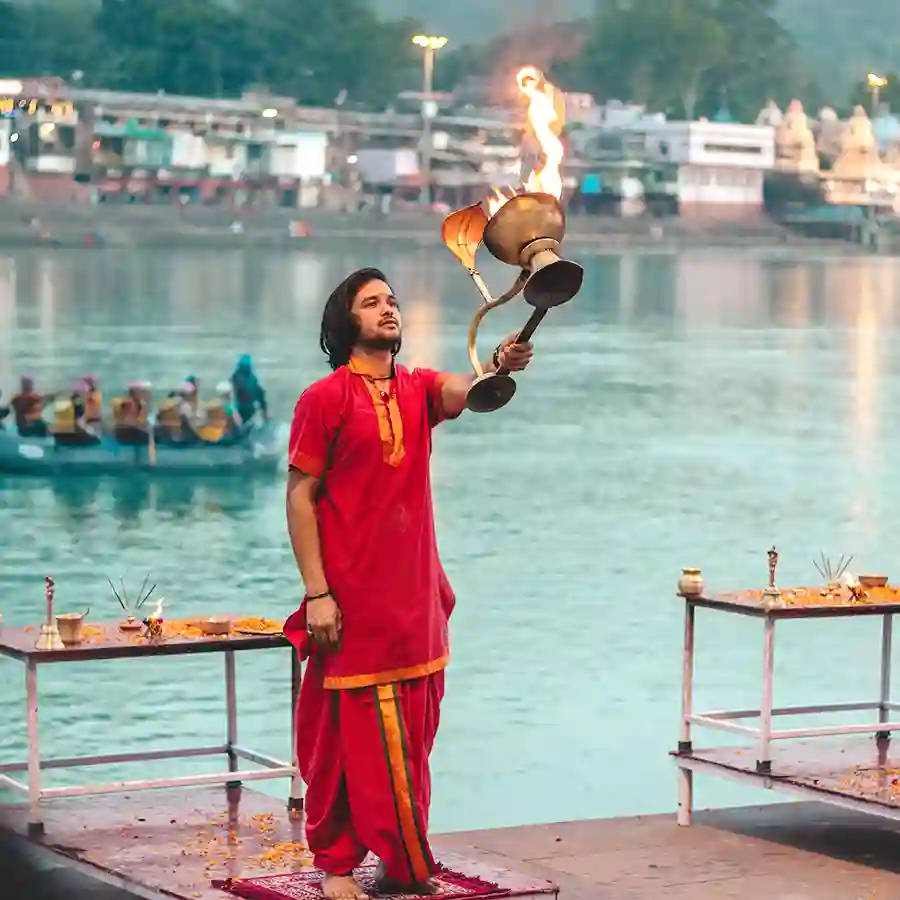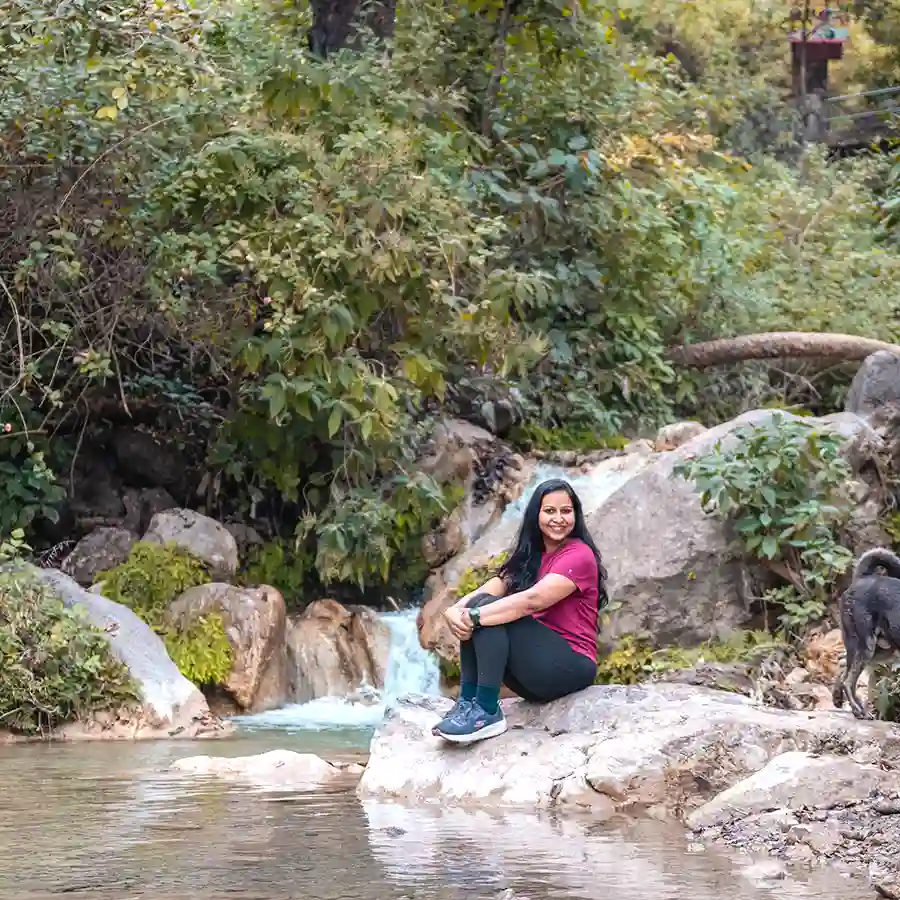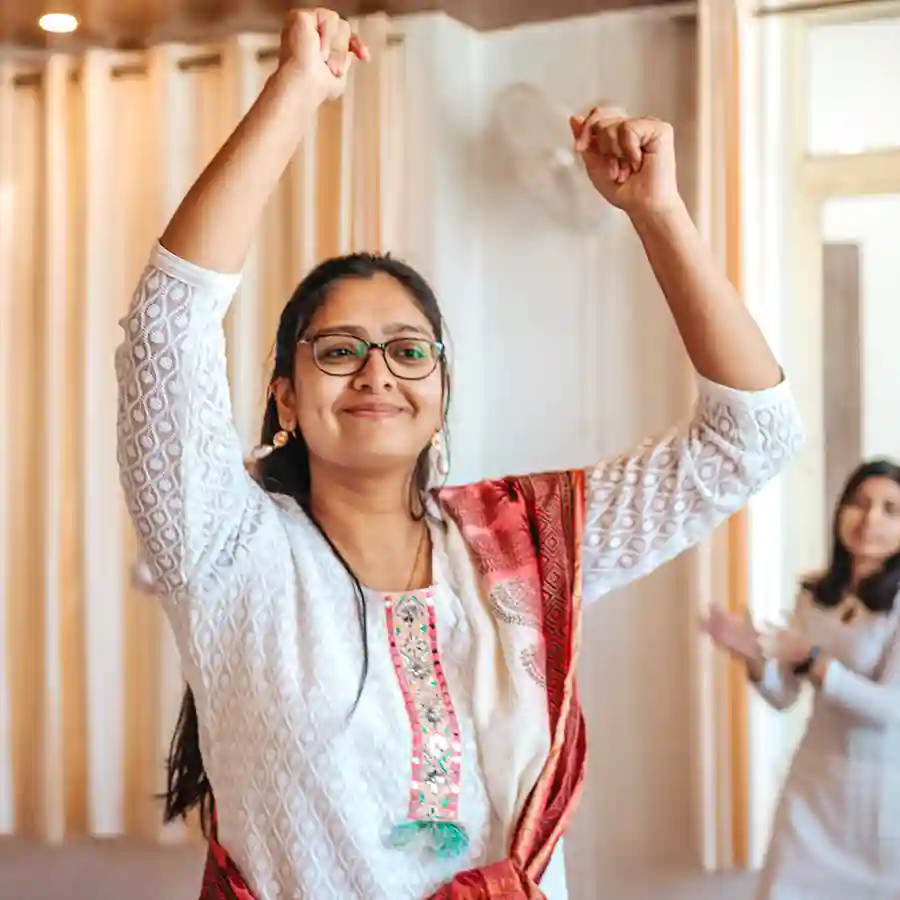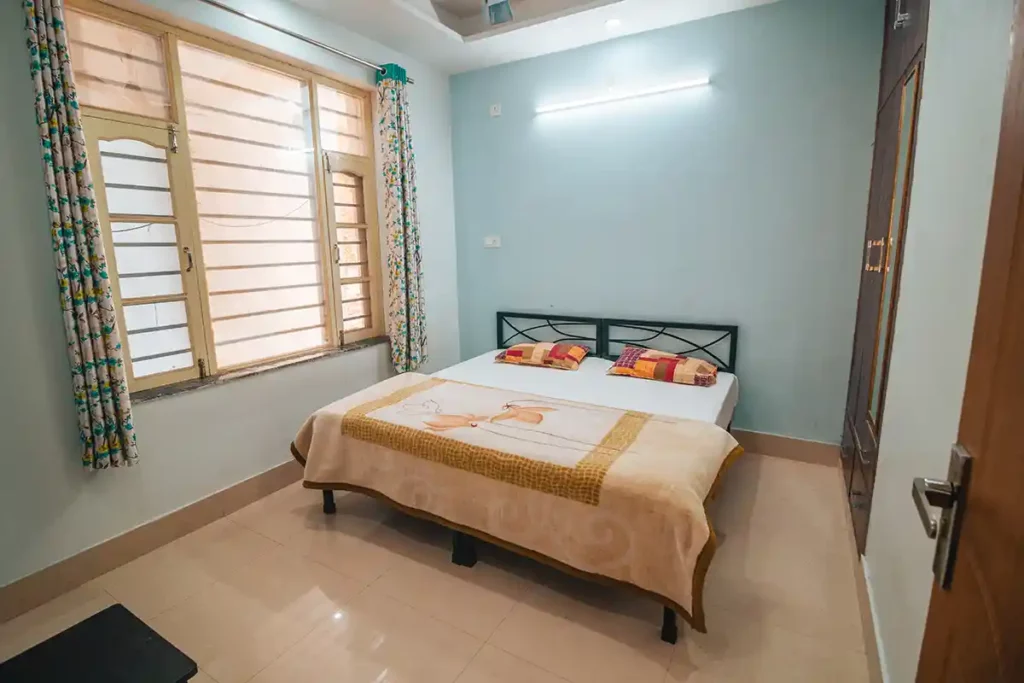
500 Hour Multi Style Yoga Teacher Training Course in Rishikesh India
Price : $2600
This is an advanced Yoga Teacher training of a longer period to fulfill you with a proper intellect of Yoga. This course emerges by adding 200 hour yoga teacher training in Rishikesh and 300 hour yoga teacher training in Rishikesh altogether. You will get detailed enlightenment of all the techniques and stances in this program. In this course, you will be able to know lots of rare and effective yoga postures, mantras, philosophy and pranayama in details. In this time period, we will provide deep lore of meditation from ancient texts and scriptures. To do this, you need to clear your basic first. You should have some ideas about yoga and meditation. This can be done by completing the previous two courses carefully. The yoga is a never-ending learning process and you need good skills in advanced yoga. We teach you the same procedures in this course. This will take you deeper into the field of Yoga and enhance your mental and physical health.
A holistic approach toward peace and harmony
This 500 Hour Multi Style Yoga Teacher Training in Rishikesh is specially designed to overcome the unawareness and myths about Yoga and Meditation. Highly professional Yog Guru in Bliss Yoga School will teach you through a way where you will admit in a yogic life and help others to achieve it too. You will be able to awake his/her intellect level to the extreme and find new paths to living life peacefully. After doing this course, you will have a conceptual clarity about all the yogic processes and their regulations. So, join us to get a healthy and knowledgeful training environment which allow everyone to percept the things quickly. Bliss Yoga School is established only to transfer peace and love to everyone. It is a place to bescome a good Yoga Teacher and collect lots of peace and positivity inside our soul.
Highlights of 500 Hour Teacher Training Program
We have lots of yoga training programs available in Bliss Yoga School but this 500 hour program is to take mastery in Yoga, meditation and other spiritual activities.
- We will cover difficult and extremely complexed yoga postures in this course so that you can have a profound experience of extraordinary serenity.
- We provide lots of other facilities during the course like sightseeing, kirtan nights, meals, course material etc.
- We provide an authorized certification which is valid globally.
- This course is available for everyone from any corner of the world who wants to get introduced with these practices and educate others about it.
- We use practical features of Samadhi Yoga to get enriched with the maximum benefits of this process and get a clear path of happiness and intellect.
Bliss Yoga School is always ready to serve you with professional training for Yoga Teacher according to your need and interests. We are known for our best training atmosphere and discipline, you will feel it too when you join us.
Course Overview
The purpose of mantra chanting in yoga is to generate vibrations and connect with the universe. Each mantra is special and rich with spiritual energy.
- Om Asato Maa Sadgamaya (Mantra from Upanishad)
- Tvameva mata ca pita Tvameva (Sloka on gods)
- Om Tryambakam Yajamahe ( Mantra on lord shiva)
- Om sahana vavatu ( Mantra from Upanishad)
- Guru Brahma Guru Vishnu Gurudevo maheshwara ( Guru stotram)
- Yogena Cittasya ( Sloka on sage Patanjali)
- Hare rama, Hare Krishna ( Maha mantra)
Students will gain extensive knowledge on yoga postures and will increase their strength, flexibility and discipline.
Ashtanga Vinyasa Yoga Course Syllabus
- Surya Namaskar A
- Surya Namaskar B Full Primary Series:
- 1. Padangusthasana
- 2. Padahasthasana
- 3. Utthita Trikonasana
- 4. Parivrtta Trikonasana
- 5. Utthita Parsvakonasana
- 6. Parivrtta Parsvakonasana
- 7. Prasarita Padottanasana A B C & D
- 8. Parsvottanasana
- 9. Eka Pada Padangusthasana A B C & D
- 10. Ardha Baddha Padmottanasana
- 11. Utkatasana
- 12. Virabhadrasana A & B
- 13. Dandasana
- 14. Paschimottanasana A B C & D
- 15. Purvattanasana
- 16. Ardha Baddha Padma Uttanasana
- 17. Triang Mukaikapada Pashimottanasana
- 18. Janu Sirsasana A B & C
- 19. Marichyasana A B C & D
- 20. Navasana
- 21. Bhujapidasana
- 22. Kurmasana
- 23. Supta Kurmasana
- 24. Garbha Pindasana
- 25. Kukkutasana
- 26. Baddha Konasana A & B
- 27. Konasana
- 28. Upavishta Konasana
- 29. Supta Konasana
- 30. Supta Padangusthasana A & B
- 31. Ubhaya Padanghusthasana
- 32. Urdhva Mukha Pashimottanasana
- 33. Setu Bandhasana
- 34. Urdhva Dhanurasana
- 35. Salamba Sarvangasana
- 36. Halasana
- 37. Karnapidasana
- 38. Urdhva Pindasana
- 39. Matsyasana
- 40. Urdhva Padmasana
- 41. Sirsasana
- 42. Urdhva Dandasana
- 43. Baddha Padmasana
- 44. Yogimudra
- 45. Uplutih
- 46. Savasana
- 1.Pawanmuktasana series 1
- 2.Pawanmuktasana serie 2
- 3.Pawanmuktasana series 3
- 4.Surya Namaskar ( sun salutation)
- 5.Chandra Namaskar (Moon salutation)
- 6.Tadasana (palm tree pose)
- 7.Triyak tadasana (swaying palm tree pose)
- 8.Trikonasana (triangle pose)
- 9.Parivirtatrikon asana – revolving triangle pose
- 10.Uttkatasana –chair pose
- 11.Virbhdrasana 1 -warrior 1
- 12.Virbhdrasana 2 -warrior 2
- 13.Virbhdrasana 3 -warrior 3
- 14.Ardha Chandrasana- Half moon pose
- 15.Vriksasana – tree pose
- 16.Parvatasana – mountain pose
- 17.Adho mukha svanasana – downward facing dog
- 18.Kati chakrasana – waist rotating pose
- 19.Malasana – squatted yoga pose
- 20.Garudasana – eagle pose
- 21.Baddha Konasana- bound angle pose
- 22.Rajkapoot asana – pegion pose
- 23.Bhujanghasana – cobra pose
- 24.Urdhva mukha svanasana –upward facing dog
- 25.Matsyasana-
- 26.Setu Bhandasana
- 27.Utrasana
- 28.Dhanurasana
- 29.Salabhasana
- 30.Supta Virasana- reclining hero pose
- 31.Virasana –hero pose
- 32.Vajrasana –thunderbolt
- 33.Gomukhasana
- 34.Balasana
- 35.Dandasana
- 36.Ardha Matsyendrasana
Week 1
- Introduction of Pranayama , Benefits of pranayama , General guidelines
- Clavicular , Thorocic and Diaphragmatic Breathing (Yogic Breathing)
- Ujjayi
- Bhastrika
- Kapalbhati
- Nadi – Sodhana
- Bhramari
- Surya – Bhedi & Chandra – Bhedi
- Sheetali & Sheetkari
Week 2
Sitting postures for pranayama sadhana-
The practice of Mudra hand gestures is an ancient facet of yoga. Performing gestures effects the energy flow of the body and can change a person's spiritual and mental characteristics.
- Jnana mudra
- Chin mudra
- Yoni mudra
- Bhairava mudra
- Shambhavi mudra
- Nasikagra
- Khechari
The practice of Bandhas expands the lung capacity and breathing capabilities during yoga. It also strengthens the entire body from the inside out.
- Preparation
- Uddiyana
- Jalandhar
- Mula & Maha Bandha Teaching
- Teaching
- Doubts
Meditation is a systematic practice that promotes physical, mental and emotional tranquility with the purpose of reaching Samadhi (self-realization).
- Introduction to Meditation
- Breathing Awareness Meditation
- Om / Mantra Meditation
- Trataka
- Dynamic meditation
- Tips for developing concertation
- Silence Practice
- Ajapa japa
- Antar mouna
When a yoga practitioner moves through the various internal states of Yoga Nidra, a profound experience of relaxation occurs. This is called "Turiya," a sensation of pure bliss.
- Basic Relaxation
- Tension Relaxation
- Full Body Relaxation
Yogic cleansing exercises are important to learn how to incorporate your breath and meditate properly during physical aspects of yoga. It also removes the blockages in the energy channels.
- Jalaneti Satkarma (Nasal cleansing with salty water)
- Rubber neti (Nasal cleansing with a rubber string)
- Agnisar Kriya
Proper understanding of the physical body will help to prevent injury before, during and after practice. There are two kinds of yoga anatomy: physical and spiritual. Understanding both types is needed.
- Digestive System
- Respiratory System
- Circulatory System
- Nervous System
- Endocrine System
- Organs
- Bodily systems
- Nadis
- Chakras
- Muscular System
- Skeletal Sytem
- Muscle Functions according
to Joint Movements - Breathing
- Inversions
- Svasana
Guidelines in Studying Asana Anatomy
Anatomy of:
Yoga Philosophy is the foundation of our yoga practice and is the key to earn yogic strength. Through the path of Vedanta Philosophy, you will establish a solid, well-rounded yoga practice.
Patanjali yoga sutras-
- Introduction to the Himalayan Traditiof of Yoga
- Introduction to the different indian philosophy
- History of Yoga
- Yoga Sutra of Patanjali
- Types of yoga
- Eight limbs of yoga
- Yamas and Niyamas(Ethics of yoga)
- Philosophy of Asana
- Concentration and its power
Week 1
Week 2
- 4 aspects of mind
- How to controld the mind
- Samadhi and the goal of yoga
- Introduction to Bhagawat Geeta
- Chakras
- Kundalini
- Science of Karma
- Indian culture and Spirituality
Week 3
Week 4
Students will take turns practicing their teaching skills by performing in front of their peers and teachers.
- Demonstration
- Alignment
- Instructions
A yoga teacher should efficiently perform the practical applications of class planning and preparation. At Bliss Yoga School, our students will learn how to create a positive and peaceful class environment for an enjoyable and transformative experience.
- 1- Positive & conscious communication.
- 2- Friendship and trust.
- 3- Time management
- 4- Qualities of a teacher
- 5- Principles of demonstrating, observation, assisting, correcting.
- 6- Use of voice in class
- 7- Mental & emotional preparation for teaching.
- 8- Class preparation
- 9- Step by step class structure planning.
Students will take turns practicing their teaching skills by performing in front of their peers and teachers.
- Written Test
- Oral Test
- Attendance
- Performance
- Behavior









